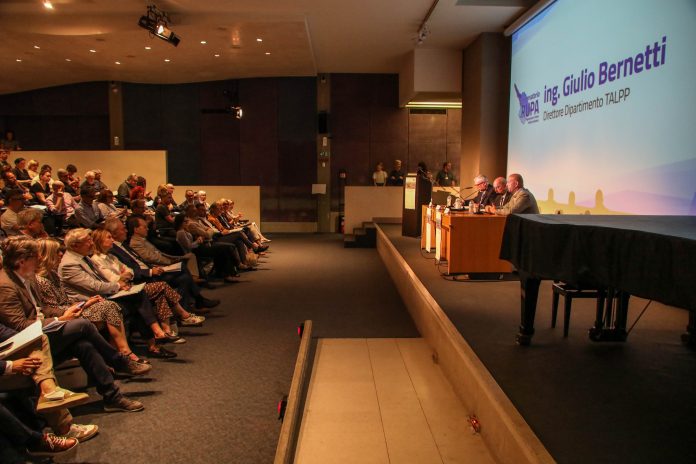by InTrieste
This morning, the Auditorium of the Revoltella Museum in Trieste was abuzz with discussions on urban renewal and housing policies. The event, organized by the Municipality of Trieste, marked the launch of the Urban Regeneration and Housing Policies Observatory (RUPA).
The conference featured prominent speakers including Mayor Roberto Dipiazza, Giulio Bernetti, Director of the Department of Territory, Environment, Public Works and Heritage, and Eddi Dalla Betta, Director of the Territorial Planning Service.
In his opening remarks, Mayor Dipiazza highlighted the city’s commitment to sustainable development, reminiscing about his collaboration with Ondina Barduzzi in 1984 that transformed Muggia into Porto San Rocco. “I am against the waste of territory,” Dipiazza declared. He emphasized the potential of Porto Vecchio – Porto Vivo, envisioning it as a unique urban space fostering economic, cultural, and tourist growth. “We must continue to do good for this city, which is experiencing an incredible moment,” he urged.
Giulio Bernetti underscored the significance of the conference as a platform for dialogue among technical experts and stakeholders. Bernetti pointed to Porto Vecchio – Porto Vivo as a prime example of urban regeneration and addressed the pressing issue of short-term rentals in tourist-heavy cities.
The conference also featured input from property and tenant unions, real estate agent associations, professional orders, trade associations, foundations, and functional autonomies, providing a comprehensive view of the housing market and urban policies.
Councillor for Territorial Policies, Michele Babuder, concluded the discussions by stressing the need for strategic interventions in underutilized areas such as Servola, now benefiting from European and national funding. “The administration must have the courage to invest in the enhancement of public green spaces,” Babuder stated. He noted that contributions and allocations for green space development have increased during his tenure, aiming to make the city’s parks more accessible and aesthetically pleasing.
The Urban Regeneration and Housing Policies Observatory (R.U.P.A.), set to operate over three years, aims to provide a comprehensive understanding of the city’s dynamics through integrated data analysis. This initiative seeks to define a clear framework for interpreting data and identifying trends.
Urban planning today requires tackling both innovative and long-standing issues, from urban regeneration to housing policies. The Observatory will address key questions about the city’s demographic changes, housing and service demands, and the relationship between supply and demand.
The conference not only presented the first report of the Observatory but also served as a forum for reflection on critical urban policy themes. Among the topics discussed were the balance between stable and temporary communities in Trieste, housing accessibility, the risk of marginalization, and the evolving needs of the city’s population.





























